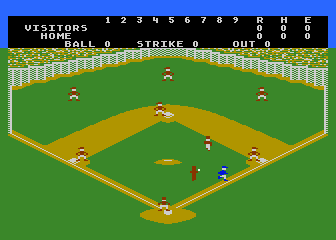
Hardware
]Much of the technology in the Atari 8-bit family of home computer systems were originally developed as a second-generation games console intended to replace the 2600. However, as the system was reaching completion, the personal computer revolution was starting with the release of machines like the Commodore PET, TRS-80 and Apple II. These machines were similar in technological terms to the 2600, but sold for much higher prices with associated higher profit margins. Atari's management decided to enter this market, and the new technology was repackaged into the Atari 400 and 800, hitting the market in 1979.
The chipset used in the 400 and 800 was designed because they were aware the 2600 would be obsolete by the 1980 time frame.[citation needed] What was surprising was the sudden entry into the market of new competition, whose machines quickly cut off the sales of the 2600.[citation needed] Atari decided to re-enter the games market with a design that closely matched their original 1978 specifications. In its prototype stage, the Atari 5200 was originally called the "Atari Video System X - Advanced Video Computer System", and was codenamed "Pam" after a female employee at Atari Inc. It is also rumored that PAM actually stood for "Personal Arcade Machine", as the majority of games for the system ended up being arcade conversions. Actual working Atari Video System X machines, whose hardware is 100% identical to the Atari 5200 do exist, but are extremely rare.
The initial 1982 release of the system featured four controller ports, where nearly all other systems of the day had only one or two ports. The 5200 also featured a revolutionary new controller with an analog joystick, numeric keypad, two fire buttons on each side of the controller and game function keys for Start, Pause, and Reset. The 5200 also featured the innovation of the first automatic TV switchbox, allowing it to automatically switch from regular TV viewing to the game system signal when the system was activated. Previous RF adapters required the user to slide a switch on the adapter by hand. This unique RF box was also where the power supply connected in a unique dual power/television signal setup similar to the RCA Studio II's. A single cable coming out of the 5200 plugged into the switch box and was used for both electricity and the television signal.
The 1983 revision of the Atari 5200 has two controller ports instead of four, and a change back to the more conventional separate power supply and standard non-autoswitching RF switch.[citation needed] It also has changes in the cartridge port address lines to allow for the Atari 2600 adapter released that year. While the adapter was only made to work on the two-port version, modifications can be made to the four-port to make it line-compatible. In fact, towards the end of the four-port model's production run, there were a limited number of consoles produced which included these modifications. These consoles can be identified by an asterisk in their serial number.
HISTORY



Manufacturer: Atari Inc.
Type: Video game console
Generation: Second generation
Retail availability:
NA November 1982
Discontinued: 21 May 1984
Units sold: 1 million
Media: ROM cartridge
CPU: MOS 6502C @ 1.79 MHz
Controller input: Joystick Trak-Ball
Predecessor: Atari 2600
Successor: Atari 7800
TOP 10 RATED GAMES
TOP 10 WORSE GAMES

1. REALSPORTS BASEBALL
2. FROGGER 2: THREEEDEEP!
3. GREMLINS
4. JUNIOR PAC-MAN
5. MINER 2049ER
6. MS PAC-MAN
7. PITFALL 2
8. RESCUE ON FRACTALUS
9. ROBOTRON 2084
10. SPACE DUNGEON
1. SUPER COBRA
2. STAR WARS: THE ARCADE GAME
3. STAR WARS: DEATH STAR BATTLE
4. SPACE SHUTTLE
5. REALSPORTS TENNIS
6. QUEST FOR QUINTANA ROO
7. JAMES BOND 007
8. GYRUSS
9. GORF
10. CONGO BONGO








